No Man's Sky resources guide: what they're for, and how to find them
We help you scour the universe to figure out which precious resources to sell and which to save.
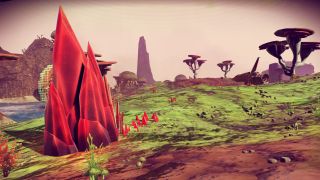
A surprising amount of No Man's Sky doesn't involve simply zipping around the galaxy and staring at weird landscapes, but hunting for the resources to power and fund your trip. Here's a guide to explain each resource, what it’s used for, and the best ways to find them.
There are five primary types of resources. When you scan a planet while on foot, resources will be marked on your HUD with icons. It can be a little tricky because the icons will tell you what type it is, but won’t call out which specific resource it is.
And remember, if you're having trouble finding something, don't forget to talk to aliens in space stations and planetary outposts, and check the galactic trade terminal, which often has these elements for sale.
Once you have all your precious resources in tow, take a look at our other No Man's Sky guides to make some quick cash and increase your inventory size.
Isotopes
These are marked with a red lightning bolt, and are used to power your ship, multi-tool, and life support.
Carbon (Common)
Base value: 6.9
Found in all sorts of different types of plant life like trees and shrubs. If you’re a monster, take out some of the local wildlife for a good carbon harvest. Be careful though, many sentinels aren’t fond of you killing trees or cute mushroom people. In addition to powering your suits and multi-tool, it can sometimes be gifted to aliens in exchange for additional conversations.
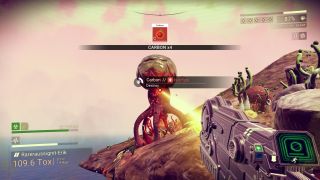
Thamium9 (Uncommon)
Base value: 20.6
You can find this in short plants on a planet’s surface, but it’s far easier to mine from asteroids in space in greater numbers. Whenever you’re traveling between planets, take a moment to stock up. You’ll burn through thamium9 easily, since it’s used to charge your pulse engine and as a component in crafting certain technologies.
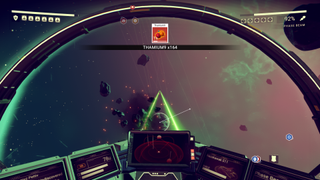
Plutonium (Rare)
Base value: 41.3
Found in red pointy crystals, often tall and easy to spot but sometimes just poking out of the ground a few inches. Important, since it powers your ship’s launch thrusters, meaning if you’ve landed and you don’t have plutonium, you won’t be able to take off again. Luckily, it’s fairly abundant on planets, especially in caves. You’ll also find a fair amount in small red boxes surrounding alien outposts, so don’t fret if there are no crystals in sight. Beware though, mine too many crystals and Sentinels will be scanning your tush in no time.
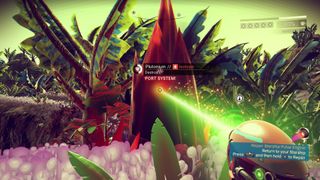
Oxides
Marked by a yellow icon, oxides can be used in certain crafting recipes. They’re also used to recharge defensive technologies like your exosuit’s hazard protection capabilities and your ship’s deflector shield, so it’s a good idea to keep some handy just in case space pirates decide to hunt you down.
Iron (Common)
Base value: 13.8
Typically found in rock formations and large asteroids, iron is one of the most abundant resources in all of No Man’s Sky. Don’t worry about scrapping it to free up inventory space because walking a few steps in any direction almost guarantees a method for mining iron.
The biggest gaming news, reviews and hardware deals
Keep up to date with the most important stories and the best deals, as picked by the PC Gamer team.
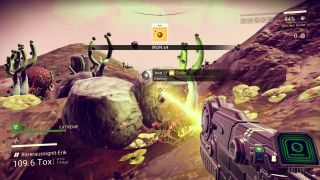
Zinc (Uncommon)
Base value: 41.3
You'll typically find zinc in plants with yellow blossoms, and be sure to stock up on it. It’s an important ingredient in crafting warp cells, which get you from one galaxy to the next.
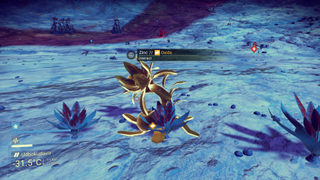
Titanium (Rare)
Base value: 61.9
You can find this in yellow crystals, similar-looking to plutonium on a planet's surface. You can also collect it after destroying sentinels. It's used for recharging ship defenses and crafting upgrades for your multi-tool.
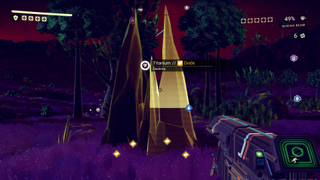
Silicates
If you’re looking to upgrade your existing tech, silicates will help you fashion new modules for your ship, exosuit, and multi-tool.
Heridium (Common)
Base value: 27.5
Look for large rock formations that stand apart from the rest of the terrain. Scanning will show you a brief holographic grid. It's not always easy to find, but when you do there tends to be tons of it.
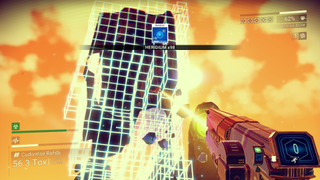
Platinum (Uncommon)
Base value: 55
You'll find it in blue plants, though it’s not exactly abundant. It’s used to create valuable ship and exosuit components, so if you have the inventory space try to keep some handy.
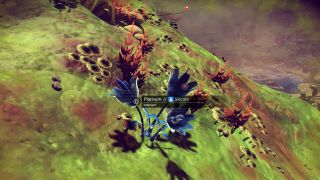
Chrysonite (Rare)
Base value: 82.5
Look for spiky blue crystals, again, that are the same in appearance as Plutonium. Caves are a good bet. Be sure to save space for it if you can. This one is probably worth hoarding for a while since it's used for advanced blueprint crafting.
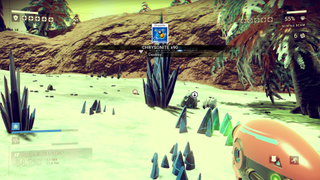
Neutrals
If you’re looking to make bank, neutral elements are used to create valuable alloys that’ll go for high prices on the galactic market, but more importantly, they’re vital for crafting and repairing ship upgrades, particularly for warp drives—if you have the right recipes, that is. Either way, they’re usually worth a lot on their own, so if you’re trying to save up for a shiny new ride, reserve an inventory slot or two for neutrals. This section will be a bit repetitive because you can find them all in asteroids or planetside, in which case, just remember: if it shine, mine.
Copper (Uncommon)
Base value: 110
Your best bet for copper is in asteroids, the larger ones that take a number of shots to completely destroy. You can also find copper in floating rocks, shaped like teardrops, hovering over a planet's surface. It won't be on every planet, but if you see one there are bound to be lots more so you can stock up.
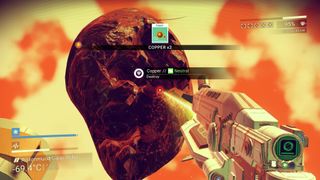
Iridium (Uncommon)
Base value: 96.3
Another that can be tricky to find, but check any large asteroids you see and blast 'em until your inventory is full. Planets will have mineral towers aplenty as well.
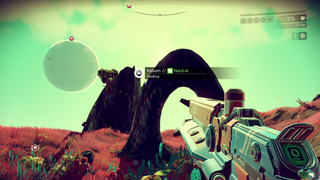
Nickel (Uncommon)
Base value: 137.5
Asteroids, asteroids, asteroids, and of course, mineral deposits on planet.
Aluminum (Rare)
Base value: 165
Again, asteroids are a good place to start, but you’ll also find it in crystalline mineral deposits on planets too.

Gold (Rare)
Base value: 220
Find gold in asteroids or big shiny globules on a planet’s surface or in the occasional—you guessed it: asteroid. Keep in mind that planets with extreme weather conditions usually harbor the rarest minerals.

Emeril (Rare)
Base value: 275
Those chicken-nugget-looking things in space? Asteroids I think they’re called? Shoot ‘em. If you’re lucky—BAM! Emeril lies in wait. If you’re really lucky, it’s actually a huge chicken nugget. Planetside, if you spot a lime green spire jutting into the sky, mine it.
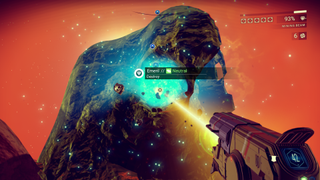
Precious elements
These pretties are marked by a purple icon and are extremely difficult to find in the wild—literally. Feed animals and they might dump out a precious element. So far, all are used in high-level crafting recipes, but you can also flip them for a good price on the market or with traders.
Calium (Very Rare)
Base value: 288.8
This nets a good price in trade, but can be tough to find. Check plants, particularly those that appear to be expelling gasses.
Radnox (Very Rare)
Base value: 302.5
Look for this rare element on planets with extreme climate conditions. It spawns in rocky green globules on the surface.
Murrine (Very Rare)
Base value: 302.5
Found planetside, Murrine looks like a random, bulbous arrangement of golden spheres.
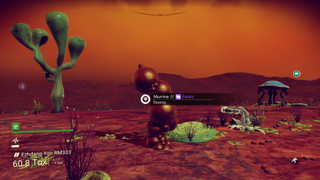
Omegon (Very Rare)
Base value: 309.4
Very rare, and can be dropped by creatures if you feed them. It’s easiest to find on the occasional trader. If you see it, clean out the stock. You know. Just in case.
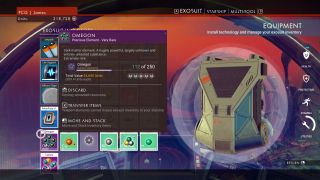

Chris started playing PC games in the 1980s, started writing about them in the early 2000s, and (finally) started getting paid to write about them in the late 2000s. Following a few years as a regular freelancer, PC Gamer hired him in 2014, probably so he'd stop emailing them asking for more work. Chris has a love-hate relationship with survival games and an unhealthy fascination with the inner lives of NPCs. He's also a fan of offbeat simulation games, mods, and ignoring storylines in RPGs so he can make up his own.
Most Popular


